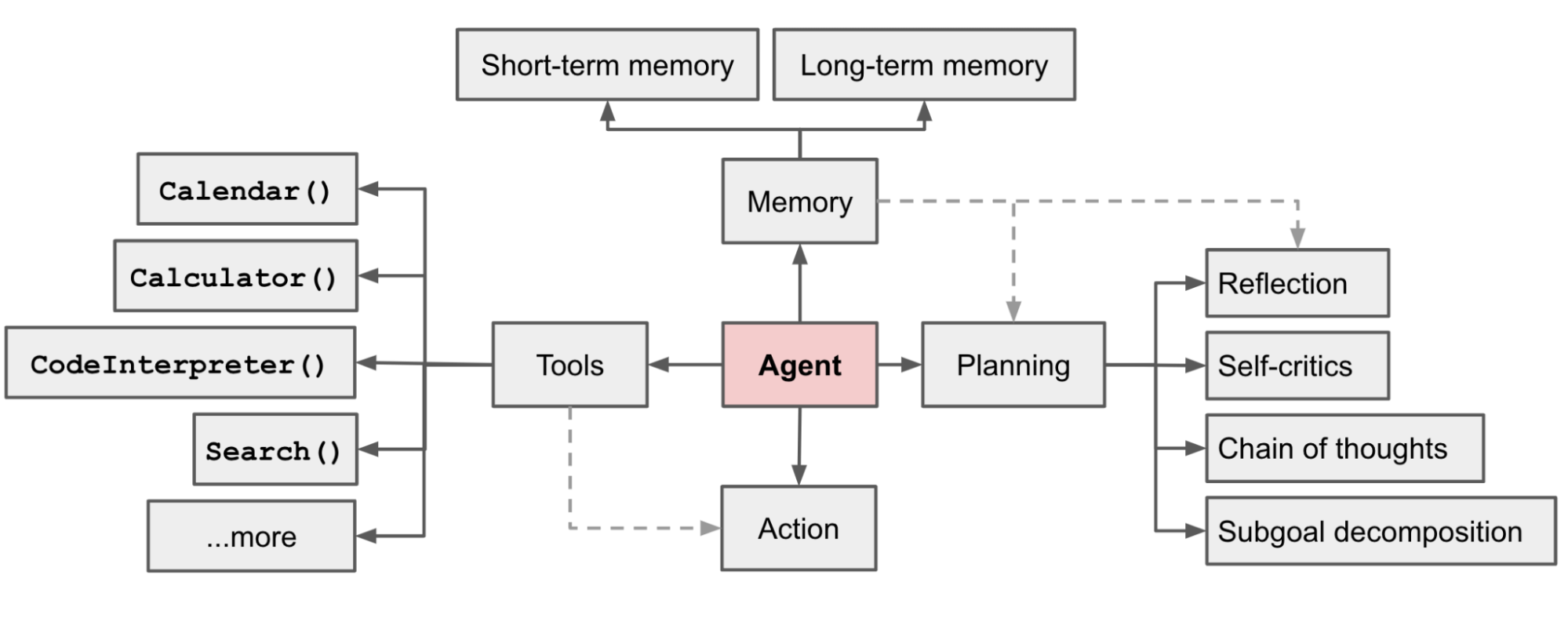LLM-based Agent System Component
Jump to navigation
Jump to search
An LLM-based Agent System Component is an LLM-based system component within an LLM-based agent architecture.
- Context:
- ...
- Example(s):
- LLM-based User Interface Component: Provides interfaces for user interaction including text, voice, GUI elements etc. Key capabilities include input parsing and validation, response rendering in different modalities, interfacing with output generation modules. Should support standardized interfaces for connecting to agent modules.
- LLM-based User-Input Processing Component: Responsible for analyzing user input. Key capabilities include linguistic analysis, understanding nuances, extracting entities and intents. Should provide standardized interfaces to return extracted information.
- LLM-based Knowledge Base Component: Provides standardized access to external structured knowledge sources like databases, knowledge graphs, ontologies etc. Capabilities include knowledge ingestion, organization, storage and retrieval. Should support interfaces for diverse knowledge sources.
- LLM-based Memory Component: Maintains history of conversations, interactions, relationships, entities etc. Provides continuity and personalization. Capabilities include ingesting data, organizing, storage and retrieval. Needs interfaces for short-term and longer-term memory.
- LLM-based Retrieval Component: Retrieves relevant knowledge from memory and knowledge bases based on context and user input. Key capabilities include semantic search over interaction memory and factual knowledge. Needs interfaces to query connected memory/knowledge components.
- LLM-based LLM-Engine Component: Generates conversational responses based on context, retrieved knowledge etc. Key capabilities include language generation and disambiguation. Needs interfaces to receive context data and return responses.
- LLM-based Response Selection Component: Selects best response from candidates based on criteria like coherence. Key capabilities include candidate generation, scoring and selection. Requires interfaces to receive candidates and return selections.
- LLM-based Planning Component: Strategizes goals and formulates plans by breaking down goals into executable steps. Key capabilities include goal formulation, hierarchical planning, plan optimization. Needs interfaces to set goals and retrieve plans.
- LLM-based Action Component: Executes planned actions and steps by querying APIs/services. Capabilities include resolving plans into invocations and interactions. Requires interfaces to receive plans and execute steps.
- LLM-based Agent Profile Component: Characterizes key agent attributes like persona, capabilities etc. Capabilities include representing attributes in a machine-readable format. Needs interfaces to access and update profiles.
- LLM-based Evaluation Component: Assesses performance based on metrics like accuracy, coherence etc. Capabilities include metric definition, instrumentation of components, analysis and reporting. Requires interfaces to retrieve system data.
- LLM-based Mitigation Component: Implements strategies to address challenges around robustness, security etc. Capabilities include detecting anomalies and applying mitigations. Needs interfaces to access system signals and apply fixes.
- LLM-based Monitoring Component: Tracks metrics like latency, usage etc. for system management. Capabilities involve monitoring infrastructure and components. Requires interfaces to capture metrics.
- LLM-based Orchestration Component: Coordinates components and handles workflows. Capabilities include managing states, transitions, concurrency. Needs interfaces to invoke components.
- ...
- Counter-Example(s):
- a RAG-based System Component (for a RAG-based system).
- a LLM-based End-User Application Component (for an LLM-based end-user application).
- ...
- See: LLM-based QA System, LLM-based Chatbot.
References
2023
- (Wang, Ma et al., 2023) ⇒ Lei Wang, Chen Ma, Xueyang Feng, ..., and Ji-Rong Wen. (2023). “A Survey on Large Language Model based Autonomous Agents.” In: arXiv preprint arXiv:2308.11432. doi:10.48550/arXiv.2308.11432
- QUOTE: ... To harness the full potential of LLMs, researchers have devised diverse agent architectures tailored to different applications. In this paper, we present a comprehensive survey of these studies, delivering a systematic review of the field of autonomous agents from a holistic perspective. More specifically, our focus lies in the construction of LLM-based agents, for which we propose a unified framework that encompasses a majority of the previous work. Additionally, we provide a summary of the various applications of LLM-based AI agents in the domains of social science, natural science, and engineering. Lastly, we discuss the commonly employed evaluation strategies for LLM-based AI agents. Based on the previous studies, we also present several challenges and future directions in this field. To keep track of this field and continuously update our survey, we maintain a repository for the related references at this https URL.
- SUMMARY: It presents a unified framework for LLM agent architecture with 4 modules: profile module, memory module, planning module, action module.

Figure 2: A unified framework for the architecture design of LLM-based autonomous AI agent.
2023
- https://lilianweng.github.io/posts/2023-06-23-agent/
- QUOTE:

Fig. 1. Overview of a LLM-powered autonomous agent system.
- QUOTE: